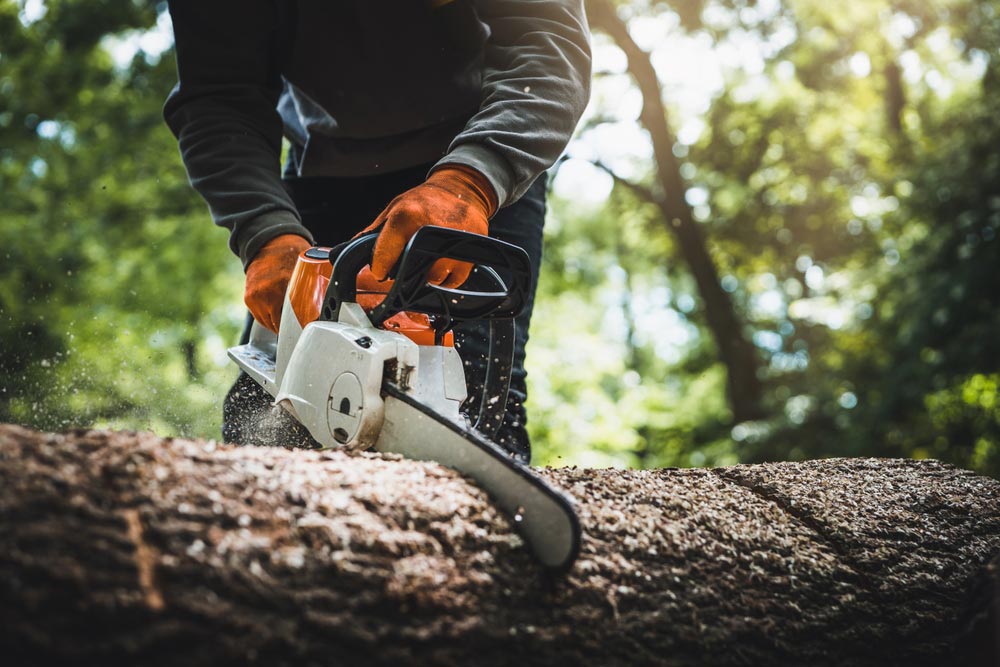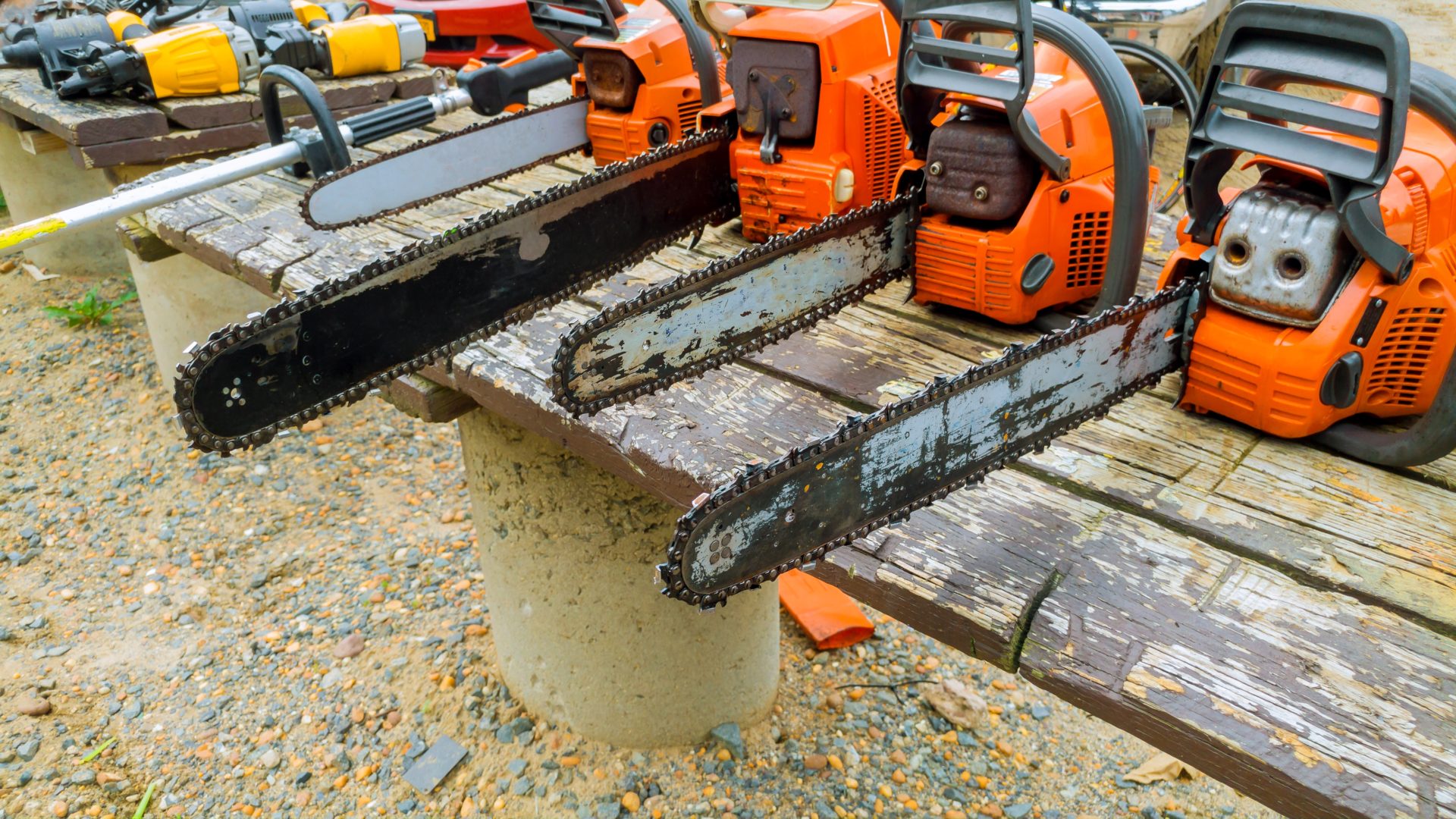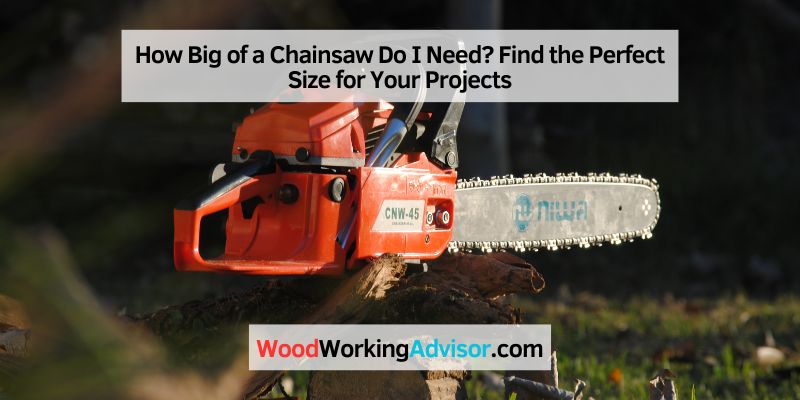To determine the size of the chainsaw you need, consider the diameter of the largest tree you plan to cut. Based on this, choose a chainsaw with a guide bar at least 2 inches longer than the tree’s diameter.
A properly sized chainsaw ensures efficient and safe cutting without straining the machine or operator. A chainsaw is an essential tool for those who work with trees, whether it’s for firewood, clearing land, or other applications. However, choosing the right size chainsaw can be confusing, with numerous options available on the market.
Understanding the appropriate chainsaw size for your needs is vital to ensure optimal performance and prevent potential safety hazards. We will guide you on how to determine the right chainsaw size for the job without breaking your budget or risking your safety.
Choosing The Right Chainsaw Size
When it comes to selecting a chainsaw, size matters. But how do you determine the right size for your cutting needs? In this article, we’ll guide you through the process of choosing the perfect chainsaw size for your projects. By assessing your cutting needs and considering the scope of your projects, you’ll be able to find the ideal chainsaw that combines power and efficiency.
Assessing Your Cutting Needs
Before making your purchase decision, it’s crucial to assess your cutting needs accurately. This involves determining the type and size of the trees you plan to cut, as well as the frequency of your cutting tasks. By understanding your cutting requirements, you can avoid purchasing an oversized or underpowered chainsaw.
Consider the diameter of the trees you’ll be cutting. For light, occasional tasks such as trimming branches or cutting small trees, a chainsaw with a bar length of 10 to 14 inches should suffice. However, if you regularly deal with larger trees or more demanding projects, you’ll need a more robust chainsaw with a longer bar length.
Considering Project Scope
Another crucial factor in choosing the right chainsaw size is the scope of your projects. Are you a homeowner tackling small weekend projects or a professional logger dealing with heavy-duty tasks? The size of your saw should align with the project scope to ensure efficiency and safety.
If you’re a homeowner or occasional user, a compact chainsaw with a bar length of up to 16 inches would be suitable. These models are lightweight and easy to handle, making them ideal for smaller projects around your yard.
On the other hand, if you’re a professional or dealing with larger projects, you’ll require a larger chainsaw. Chainsaws with bar lengths between 16 and 20 inches are better suited for heavy-duty cutting tasks. These larger models provide more power and can handle thicker trees or logs with ease.
Additionally, it’s important to consider the power source of your chainsaw. Gas-powered chainsaws are generally more powerful and suited for larger tasks, while electric or battery-powered models are typically lighter and better suited for smaller jobs.
By assessing your specific cutting needs and considering the scope of your projects, you can confidently choose the right chainsaw size. Remember, it’s essential to strike a balance between power and maneuverability. With the right chainsaw in hand, you’ll be well-equipped to tackle any cutting task that comes your way.
Credit: www.eagleptt.com
Understanding Chainsaw Bar Length
When determining the chainsaw bar length you need, consider the size of the wood you’ll be cutting. A smaller bar length works best for lighter tasks, while larger bar lengths are needed for bigger jobs. Familiarize yourself with the appropriate bar length to ensure efficient and safe chainsaw use.
Bar Length And Cutting Capacity
When it comes to understanding chainsaw bar length, it’s important to consider the cutting capacity of the chainsaw. The bar length refers to the distance from the tip of the chainsaw’s bar to the point where it enters the housing. This measurement plays a crucial role in determining the size of the projects the chainsaw is suitable for. Let’s delve deeper into the significance of bar length and its correlation with cutting capacity.
Matching Bar Length To Project Size
Choosing the right bar length for your chainsaw is essential to ensure efficient and safe cutting. If you match the bar length to your project size, you’ll optimize the chainsaw’s performance and avoid potential hazards. Here’s a breakdown of the recommended bar length for different project sizes:
| Project Size | Recommended Bar Length |
|---|---|
| Light-duty projects (pruning, limbing, and small tree cutting) | 8-14 inches |
| Medium-duty projects (felling small to medium-sized trees) | 16-20 inches |
| Heavy-duty projects (felling large trees, bucking large logs) | 22 inches or more |
It’s important to note that using a chainsaw bar length that exceeds the recommended size can hamper control and increase the risk of kickback. Conversely, using a bar length that’s too small may lead to inefficient cutting and strain on the chainsaw’s motor. So, take the time to assess your project size and choose the appropriate bar length accordingly.
By understanding the correlation between bar length and cutting capacity, you’ll be able to select the ideal chainsaw for your needs. Remember to prioritize safety and efficiency when determining the right bar length for your projects – it’s key to a successful cutting experience. So, whether you’re working on light-duty tasks or heavy-duty projects, make sure your chainsaw’s bar length matches the size of the job at hand. With the right bar length, you’ll be equipped to tackle any cutting task with ease and confidence.
Power Source Options
Power source options are a crucial consideration when determining the right chainsaw size for your needs. Understanding the benefits and limitations of gas and electric chainsaws is essential for making an informed decision.
Gas-powered Chainsaws
Gas-powered chainsaws are robust, making them ideal for heavy-duty applications such as felling trees and cutting large logs. With their unrestricted mobility, these chainsaws are perfect for tasks in remote areas where access to electricity may be limited. However, they require regular maintenance and can be heavier and noisier compared to electric options.
Electric Chainsaws
Electric chainsaws are generally lighter, quieter, and easier to maintain than gas-powered models. They are an eco-friendly option as they produce zero emissions during operation. Moreover, electric chainsaws are convenient for smaller tasks like pruning and trimming. In addition, they offer hassle-free starting and require minimal upkeep, making them suitable for occasional users. However, their tethered nature restricts mobility and usage in areas without a power source.

Credit: rimrock.com.au
Evaluating Additional Features
When it comes to choosing the right chainsaw for your needs, it’s essential to consider the additional features that can enhance its performance and ensure a smooth and safe operation. Apart from the power and size of the chainsaw, evaluating features like safety and ease of maintenance can make a world of difference in your experience. Let’s delve into these crucial aspects one by one.
Safety Features
When handling a powerful tool like a chainsaw, safety should always be a top priority. Therefore, it’s vital to evaluate the safety features offered by different models before making a selection. Here are some key safety features to look out for:
- Chain Brake: This feature automatically stops the chain’s rotation in case of a kickback, reducing the risk of accidents.
- Anti-Vibration System: A chainsaw equipped with anti-vibration technology minimizes the strain on your hands and arms, allowing for safer and more comfortable operation.
- Throttle Lockout: This safety feature requires you to press a lockout button before activating the throttle, preventing any unintentional startups.
- Bar and Chain Cover: A protective cover for the bar and chain is crucial when storing or transporting the chainsaw, preventing accidental contact and potential injuries.
Ease Of Maintenance
Proper maintenance plays a crucial role in the longevity and performance of your chainsaw. Therefore, evaluating the ease of maintenance provided by different models is essential to avoid unnecessary hassle and ensure the tool’s optimal functionality. Consider these factors:
- Tool-less Chain Tensioning: This convenient feature allows for quick and easy adjustments to the chain tension, eliminating the need for additional tools.
- Easy Access Air Filter: A chainsaw with a user-friendly air filter design enables effortless cleaning and replacement, ensuring that the engine remains in good working condition.
- Accessible Spark Plug: Look for a chainsaw that allows easy access to the spark plug for simple maintenance tasks, such as cleaning or replacement.
- Transparent Fuel and Oil Tanks: Chainsaws with transparent tanks enable you to monitor the fuel and oil levels at a glance, preventing sudden disruptions during operation.
By evaluating these additional features such as safety and ease of maintenance, you can choose a chainsaw that not only fits your power and size requirements but also provides a safe, efficient, and hassle-free experience. Prioritizing these features will ensure that your chainsaw investment is both practical and long-lasting.
Seeking Professional Advice
When it comes to purchasing a chainsaw, it’s essential to determine the right size for your needs. Seeking professional advice can help you make an informed decision and ensure that you choose the correct chainsaw that suits your requirements. Professionals in the field have the expertise and knowledge to guide you through the selection process and provide valuable insights. Here are a few ways you can seek professional advice:
Consulting A Specialist
A chainsaw specialist is an individual who has extensive experience and expertise in the field of chainsaws. Consulting a specialist can give you the advantage of personalized advice tailored to your specific needs. These professionals can assess your requirements, evaluate the tasks you intend to perform, and recommend the most suitable chainsaw size. Whether you’re a homeowner looking to trim trees or a professional tree surgeon, a specialist can provide valuable insights to ensure you select the ideal chainsaw.
Utilizing Manufacturer Guidelines
Manufacturers often provide guidelines and recommendations for selecting the appropriate chainsaw size. These guidelines are based on their extensive knowledge of their own products and the various tasks they are designed to tackle. Checking the manufacturer guidelines can give you valuable information about the specific chainsaw models and their corresponding capabilities. It’s important to adhere to these guidelines to ensure you choose a chainsaw that can handle your intended tasks safely and efficiently.

Credit: mkoutdoor.org
Frequently Asked Questions On How Big Of A Chainsaw Do I Need
How Big Of A Tree Can A 20 Inch Chainsaw Cut?
A 20-inch chainsaw can cut trees up to 40 inches in diameter. Its powerful motor and sharp blade enable efficient cutting of larger trees. It is ideal for medium to large-scale tree felling and timber cutting operations.
Should I Get A 14 Or 16 Inch Chainsaw?
Choosing between a 14 or 16 inch chainsaw depends on your needs. A 14 inch chainsaw is suitable for smaller tasks like pruning or cutting small branches. If you have larger trees or need to tackle more demanding jobs, a 16 inch chainsaw would be a better choice.
Consider the size of the trees you’ll be cutting to make the right decision.
What Is A Good Size Chainsaw For Home Use?
For home use, a chainsaw with a 10-14 inch guide bar is a good size. It’s versatile and suitable for most tasks like pruning and cutting firewood. Ensure it matches your needs and experience level. Regular maintenance and safety precautions are also important.
Is A 16 18 Or 20 Inch Chainsaw Better?
A 20-inch chainsaw is better for heavy-duty tasks, like cutting large trees. A 16-inch chainsaw is great for average-sized trees and general use. An 18-inch chainsaw is a good middle ground option, offering decent power and versatility. Choose based on your specific needs.
Conclusion
Choosing the right size chainsaw is essential for your cutting needs. Remember to consider the size of the logs you’ll be cutting and the frequency of use. By selecting the appropriate chainsaw, you can ensure safer and more efficient cutting operations.
Happy sawing!


